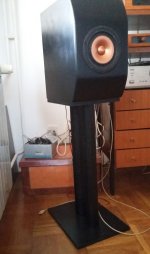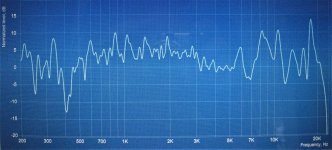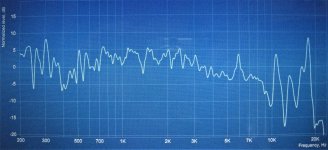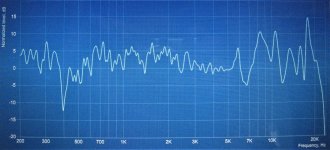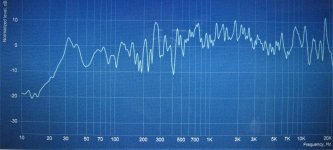I have showed those measures to a number of people, who said “that must sound bad”, but the results coming in has no-one (that i have seen yet) has. We certainly didn’t/haven’t.
Notching out A4 by 15 dB would make it sound different than the artist intended, no? Why design a speaker that does that?
A while back I rented a place where the living room had a room mode at 82 Hz. That's an E2 on an electric bass. The notch was a little deeper than the 15 dB of the A11. It made listening to anything with electric bass rather annoying as E2 would drop out of the riff.
It is dangerous measuring before you listen. It can bias the crap out of you.
It's dangerous not to perform double-blind listening trials. Any sighted trial will be biased.
Good to see you're back online, by the way.
Tom
I have showed those measures to a number of people, who said “that must sound bad”,
Did a flip thru of Collom’s 7th edition and one of the pictures showed a similar hole in the response (for a completely different reason) in a well respected speaker and suggested (at least to me on 1st read) that it wa snot as big an issue as it looks.
dave
Member
Joined 2009
Paid Member
i’ve read countless reports over the ages that narrow dips are generally benign. but what is really interesting is no reported issues with the 11ms giant step up in treble response - perhaps it is a strictly on axis issue and slightly off axis its gone
Did a flip thru of Collom’s 7th edition and one of the pictures showed a similar hole in the response (for a completely different reason) in a well respected speaker and suggested (at least to me on 1st read) that it wa snot as big an issue as it looks.
Would you happen to have the figure number handy so I can look it up? I'm curious...
Tom
Did a flip thru of Collom’s 7th edition and one of the pictures showed a similar hole in the response (for a completely different reason) in a well respected speaker and suggested (at least to me on 1st read) that it wa snot as big an issue as it looks.
dave
Then nor is the phase rotation at crossover on a conventional multi way loudspeaker. That dip will have a large associated phase shift just like a high order crossover.
Last edited:
Would you happen to have the figure number handy so I can look it up? I'm curious...
I had a quick look bu it is a 600+ page book, and i failed to find it.
This is also in the region that floor-bounce occurs and with our brain expecting it, i have never found that to be a big issue.
dave
It's been a while, but there were some other problems to solve in meantime. I was one of organizers of Triode festival Croatia (10th meeting) so it took me some time but I managed to do some measurement of finished speakers (as they were presented in festival). Here are some pics from the festival, if someone is interested in: HiFi Media - HiFi Media added a new photo. | Facebook
anyway, measurements were done without my presence (the guy is kind a strange) but he is professional and measurement gear was Dirac so I thing this is done correctly.
The last graph is measurement at axis on listening position in room (attic - under the roof). I am satisfied, but will do another box, more height, less deep and semi cylindrical. Same volume and tuning of the box… we'll see...
anyway, measurements were done without my presence (the guy is kind a strange) but he is professional and measurement gear was Dirac so I thing this is done correctly.
The last graph is measurement at axis on listening position in room (attic - under the roof). I am satisfied, but will do another box, more height, less deep and semi cylindrical. Same volume and tuning of the box… we'll see...
Attachments
- Status
- Not open for further replies.
- Home
- Loudspeakers
- Full Range
- How do Markaudio fare against KEF LS50
